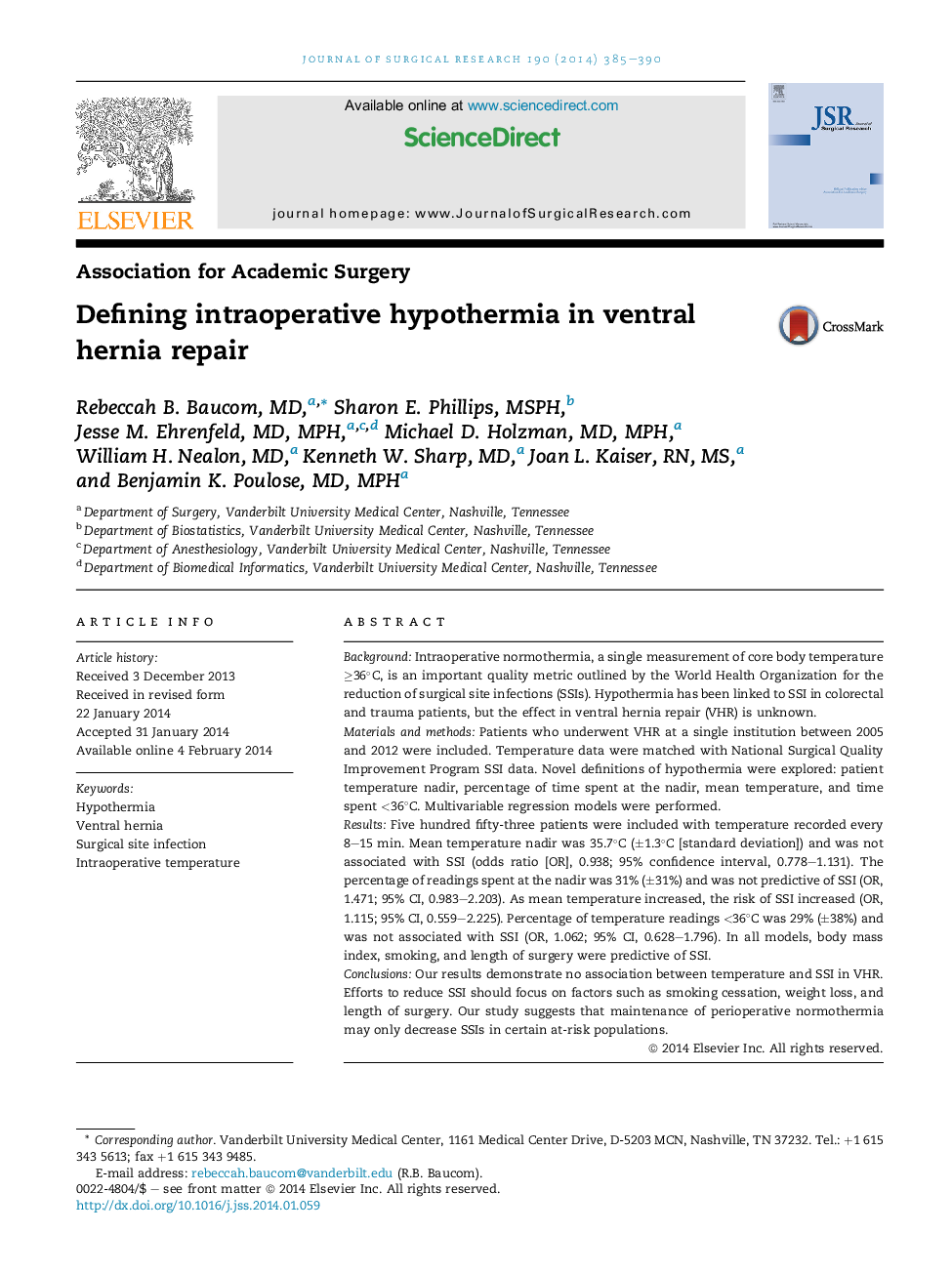| Article ID | Journal | Published Year | Pages | File Type |
|---|---|---|---|---|
| 4300207 | Journal of Surgical Research | 2014 | 6 Pages |
BackgroundIntraoperative normothermia, a single measurement of core body temperature ≥36°C, is an important quality metric outlined by the World Health Organization for the reduction of surgical site infections (SSIs). Hypothermia has been linked to SSI in colorectal and trauma patients, but the effect in ventral hernia repair (VHR) is unknown.Materials and methodsPatients who underwent VHR at a single institution between 2005 and 2012 were included. Temperature data were matched with National Surgical Quality Improvement Program SSI data. Novel definitions of hypothermia were explored: patient temperature nadir, percentage of time spent at the nadir, mean temperature, and time spent <36°C. Multivariable regression models were performed.ResultsFive hundred fifty-three patients were included with temperature recorded every 8–15 min. Mean temperature nadir was 35.7°C (±1.3°C [standard deviation]) and was not associated with SSI (odds ratio [OR], 0.938; 95% confidence interval, 0.778–1.131). The percentage of readings spent at the nadir was 31% (±31%) and was not predictive of SSI (OR, 1.471; 95% CI, 0.983–2.203). As mean temperature increased, the risk of SSI increased (OR, 1.115; 95% CI, 0.559–2.225). Percentage of temperature readings <36°C was 29% (±38%) and was not associated with SSI (OR, 1.062; 95% CI, 0.628–1.796). In all models, body mass index, smoking, and length of surgery were predictive of SSI.ConclusionsOur results demonstrate no association between temperature and SSI in VHR. Efforts to reduce SSI should focus on factors such as smoking cessation, weight loss, and length of surgery. Our study suggests that maintenance of perioperative normothermia may only decrease SSIs in certain at-risk populations.
